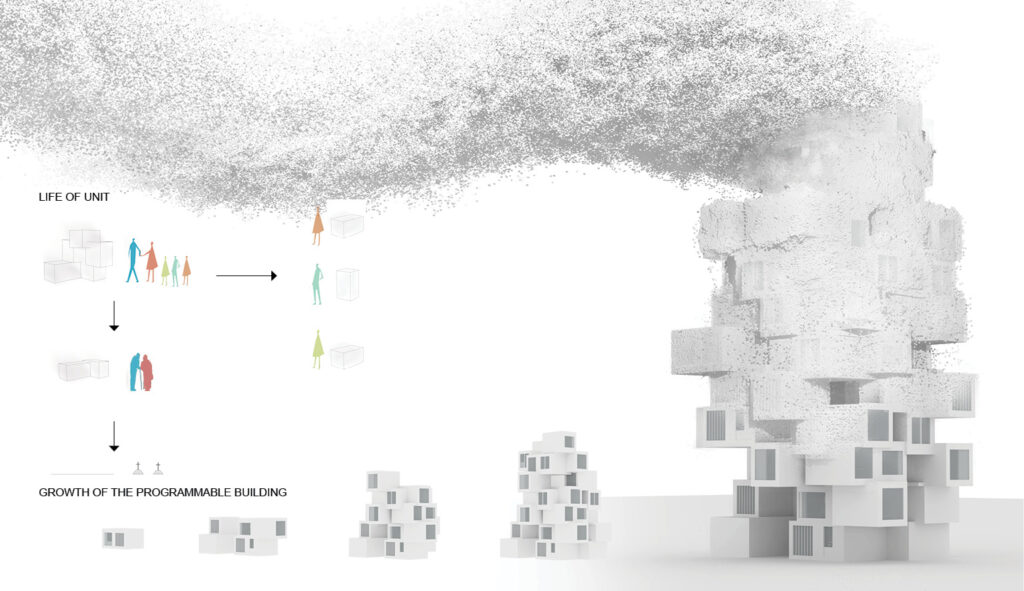Stuff 3.0, the era of programmable matter, represents a major shift in the way we interact with objects and materials. This new technology integrates computing and digital technology with the physical world, making it more adaptable and modular. With programmable matter, objects can change shape, color, and function in response to stimuli, creating a dynamic and responsive environment. The integration of computing technology with physical materials has the potential to revolutionize the way we design and interact with the built environment.
Programmable matter can be related to the adaptability and modularity found in living beings, as they are able to respond to stimuli, change and grow, and maintain a balance within their environment. This technology has exciting implications for architecture and design, as structures can become more responsive and sustainable, changing and adapting to the needs of their inhabitants. For example, buildings can adjust their temperature, lighting, and ventilation to suit the needs of the people inside, reducing energy usage and improving the overall quality of life.
Robotics as the main driver of innovation:
In addition, programmable matter also has potential applications in robotics, as robots can be made more versatile and adaptable by incorporating this technology. According to John Koetsier, “Programmable matter could allow robots to change shape, transform from one object to another, or even merge with other robots to create entirely new forms and functions.” The possibilities of programmable matter are vast and far-reaching, and as the technology continues to develop, it has the potential to greatly improve the way we interact with the physical world.
Programmable matter, is a new and experimental technology that has the potential to revolutionize the architecture industry. While it is still in its infancy, the possibilities that programmable matter presents are endless. By being able to manipulate the physical properties of materials at a molecular level, programmable matter has the potential to change the way we build and design structures. This innovative technology could lead to greater sustainability in the construction industry, as well as increased efficiency and cost savings. Although the technology is still experimental, it is worth keeping an eye on as it has the potential to disrupt the traditional methods used in the architecture industry and bring about a new era of building and design.
to continue reading about different perspectives regarding programmable matter follow the links below:


Leave a Reply